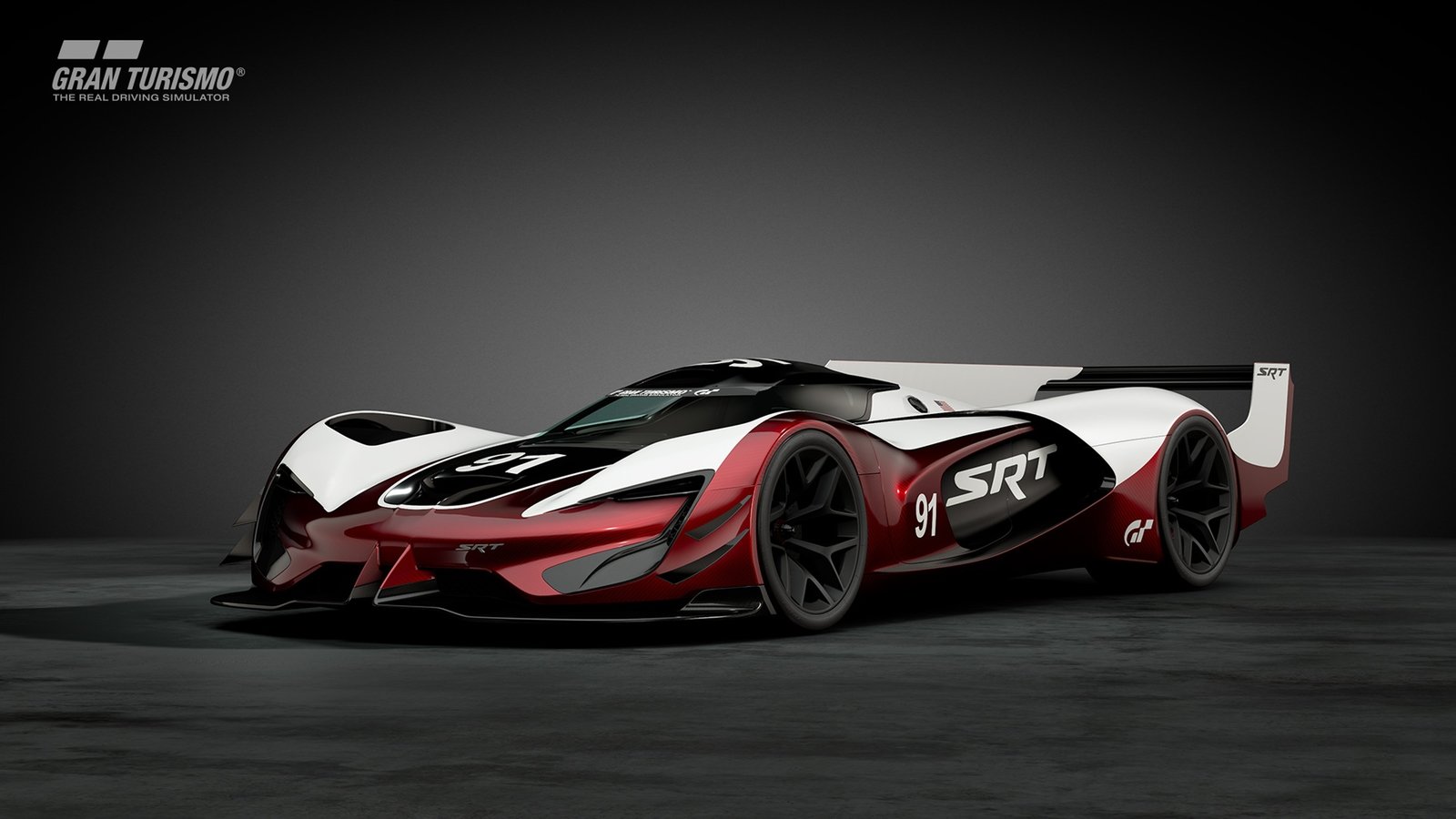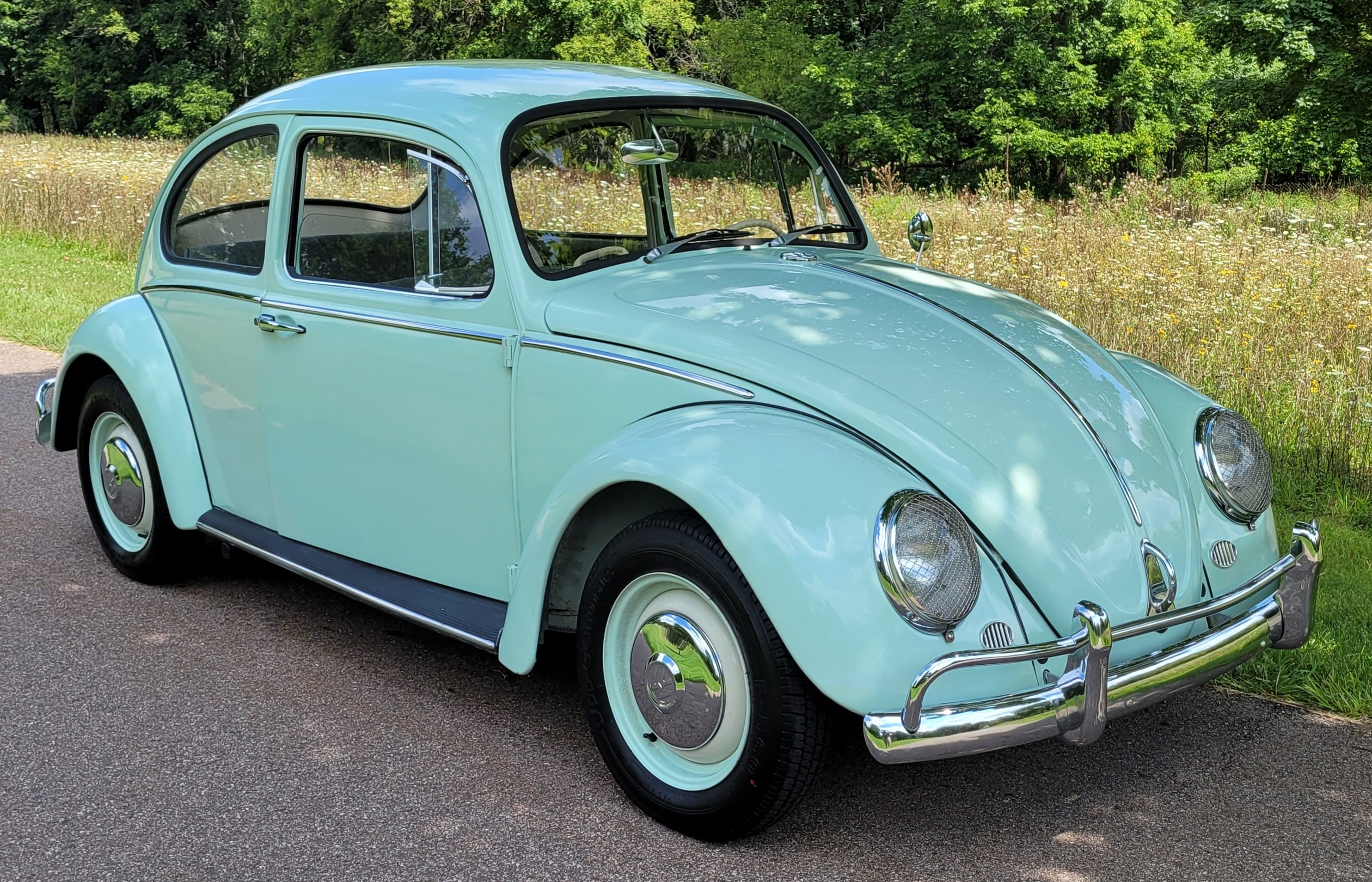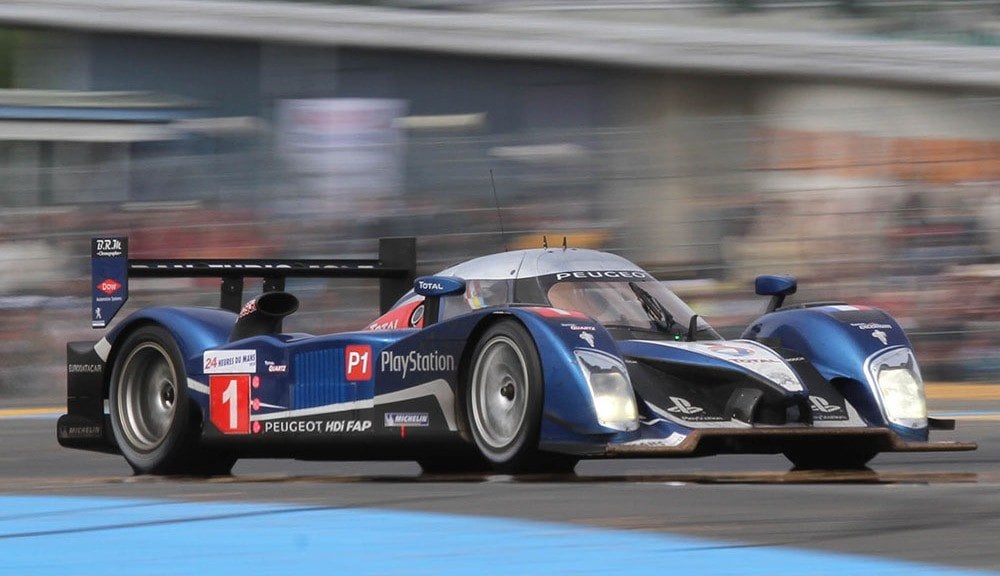SIGH. It looks like ya boy Kaz is at it again, including two variants of a car with microscopic, almost imperceptible differences between the two just to pad the car count. Meet the Renault Sport twins, the Clio R.S. 220 EDC Trophy '15 and '16. Are either of these cars good? Which is better?
Sure, the two cars have different wheels, lights, and interiors, but substantial and important differences that affect how you play the game can also be found among the cars even before their engines are started: the 2016 car allows for decals to be put on the "Formula 1-style blade" on the front bumper (no, seriously,
that's what Renault calls it), whereas the 2015 allows you only to paint it. Quite a big deal, I think, as the 2015 car comes with a "TROPHY" decal on the blade originally, which gets wiped the moment the car's appearance gets changed because of the way the livery editor works. And yes, you read that right: the car that comes stock with the TROPHY decal can't have decals put there and the car that doesn't come with that decal allows decals put on the blade.
There are also "TROPHY" decals on the rear doors, which are highlighted by side panel pieces running from as far forward as the front doors. Those get wiped too, and the game doesn't allow decals where it used to be on either car, resulting in an empty, black void that the car's bodywork works to bring attention to. So if you want to do anything to change the appearance of your car, from something as innocuous as a singular ant poop to something as must–have as a licence plate on a family hatch, say goodbye to all the car's original decals you can't put back where they were. It's just stupid design choices like this that define Gran Turismo, and makes me think no one at Polyphony Digital has ever played a game in their lives, let alone one they made themselves.
Honestly? I think the ability to put decals on the front bumper blade on the 2016 car is enough for me to declare it the car the better of the two. It certainly would be the only choice if you were someone that is completely smitten by the
1966 Renault R8 Gordini, such as myself, and wanted to create a fantasy Clio Gordini Edition for this generation of Clios, which necessitates a white front bumper bar. I mean, you could paint the entire "Other" section of the 2015 car white too, but that also whitens the side strips and rear diffuser along with it, which... drumroll, you can't put decals on either. And who the F wants a white rear diffuser?
You can celebrate this difference between the two cars by terming it as diversity, but I think one car that doesn't come saddled with stupid livery editor restrictions would have been just peachy.
I say that the difference in the livery editor alone is enough to put one car over the other, and that's because, on the racetrack, these two almost identical cars drive almost identically to each other on a racetrack. Big shock, I know. I'll write a legal disclaimer for potential cardiac arrests next time before I drop such a bombshell, I promise. "B-B-B-BUT...!
25kg!
55lbs!", I hear you sputter between painful breaths while clutching your chest, the mass difference between the two cars. With both cars being powered by the same engine, producing the exact same power, going through the exact same EDC 6 speed dual–clutch gearbox with identical gear ratios, how oh how can the 2016 car keep up with or even perform similarly to the 2015?
I... don't know. Not for sure, anyway. I can't find any instance of Renault spelling out the updates, but I can tell you how the two cars feel different on the racetrack, minute as the differences may be, if it helps? The 2015 car immediately feels lighter the moment its steering wheel is peeled off centre, with it being a tad bit more immediate biting into a corner. But, from there, the lighter 2015 car for some odd reason feels like it moves around a lot more, with larger weight shifts and more tyre chirps mid corner, asking of its driver to baby it a little more and be more cognizant of what its doing than its younger sibling. In comparison, the 2016 car is absolutely planted from corner entry to exit, with any hint of tyre squealing being quashed by the electronic differential the moment it reaches your ears. While both cars come with the same electronic differential, the main difference between the two cars to me is down to the revised programming in the 2016. In the later car, the diff entirely robs away the unpleasantries of driving a powerful FF car and letting them focus solely on pointing the car where they want to go. One could certainly make the argument that the 2016 car is a much more brain dead drive, whereas the 2015 is a much more technical and demanding drive, and will teach drivers more as a result by punishing off neutral braking in a more pronounced manner, locking a lot of its pace behind careful brake pedal control. But, it cannot be argued that, despite the mass handicap, the younger, heavier, and smarter car is simply faster around a racetrack. If the fact that I closed a gap to Vic of all people in his 2015 with me in a 2016 at Alsace isn't proof enough for you,
Alex's own testing confirms the pace advantage of the 2016 as well.
But that is not to say that the 2015 is a
sloppy car; not by any stretch of the imagination. Both are amazing point and shoot pocket rockets that offer spectacularly balanced drives. Body roll and pitch is definitely felt, but just as is with some of the best drivers' cars to roll off a production line such as an
E46 M3 and
Camaro SS, said body movement is just enough to put additional weight over a relevant tyre in a corner, and nothing more beyond that. The car feels incredible right out of the box with
205/40/R18 86Y Michelin Pilot Super Sport tyres as standard, which are classified as Comfort Softs in GT7. In conjunction with its magic differential and ABS, there is simply no getting the front tyres to let go and start smoking even with the most ham–fisted of driving. Despite being set up from the factory for Comfort Soft tyres, the car felt right at home wearing uprated Sport Medium tyres, which we were running on race day, though the grip on offer is so immense that the Clio would break all known laws of physics and the universe and phase through the ground before it'd start smoking its tyres! Check out that suspension breaking, physics altering pitch and roll!
Throughout all of that physics nonsense, the steering wheel gains and loses weight linearly and delightfully from corner entry to exit, never leaving drivers to guess what the front tyres are doing. Imagine having steering wheel feedback in a modern car (and in a self proclaimed real driving simulator)! What a novel concept! The Clios are also among a very exclusive club of cars that offer column mounted shift paddles, which I personally prefer over wheel mounted paddles in the absence of a stick shift. The engine is rev happy with peak power up top and peak torque down low, all traits that serve the car well on public roads and racetracks alike. All of this make both Clios delightfully engaging drives, and proof that a hot hatch and a modern car laden with electronics can still offer a sensational drive that doesn't simply insulate drivers from the experience and spoonfeed them speed.
If I had any complaints, they'd be minor ones. I recognise that modern cars are all downsizing their engines and resorting to turbos to keep up in power output due to stricter emission laws, and that they make all the sense in the world on paper, but these tiny turbo econobox engines have simply never felt natural to me. With its M5Mt 401 engine making
peak power at 6k and its limiter set to 7k, the engine cuts out right as it runs out of breath, which, again, makes sense on paper. In practice however, I have found myself in many instances where I wish I could ride out a lower gear when exiting out of a corner, or approaching the braking zone of one. Second, third, and fourth
gears have quite a sizeable gap between them, which might make sense on a drag strip to minimise shifting, especially with all that low down turbo torque, but I often find myself panicking in a subconscious level when the revs drop low on corners such as Sheene Curve on Brands Hatch, which will see the car in middling 5.5k in 4th, but downshifting to 3rd just leaves it sniffing the limiter. Will the car still pull? Yeah, it will. It just doesn't
sound like it will, and it's at a stark clash with how I've learned to drive, as I've equated speed to sound. As a result, I found myself making many unnecessary and short lived downshifts in the car, and it's not often that I found myself wanting to just slap the gearbox of a car into auto and just leave it to do its own thing. The engine and gearbox combo simply doesn't have a lot of flexibility to it with a narrow
powerband in practice. Sure, it has great torque down low, but there's no arguing against the mechanical advantage of a lower gear and higher revs, which the gear ratios don't much allow for with wide spacing. What this results in is that there's only one correct gear to be in at any given situation on a racetrack, and the (lack of) sounds it makes make discerning said correct gear an unintuitive task.
Again, I get it. Cars are just like this nowadays, and no, I don't think an NA unit would be faster even if it could output 216HP from a 1.6L size. I'm just saying it feels unnatural to me. Could you get used to it? For sure. I just fear getting
too used to it and start lugging my Rotary sports cars and Flat Sixes, you know?
To find out exactly how good the Clio is, I thought a few comparisons were in order (but mainly because I haven't reviewed the past two weeks' cars and I have a itch to bitch). Now, any professional reviewer or sane person would take a contemporary hatch like the Golf VII and Focus ST to pit against the Cars of the Week, but I'm working towards one of them and taking medication for the other, with me being neither here nor there. So I rose the bar higher by pitting a bona fide, 2 door, 2 seat FR sports coupé against the Clio, in the form of the 86 GT "Limited".
...which got promptly
destrolished around Laguna Seca to the tune of about a whole second a lap. To give you an idea of how bad it was, the 2 door sports coupé was not only less powerful, but
heavier than the 5 door hatch!
And it demanded for me to be careful on the throttle? Eww!
(Just kidding, I adore the 86, but I got spanked HARD in that race and I don't think a defamation suit right now is a good idea.)
So then, what closer competition to a Clio than... a Clio? That's right, I brought a third, oldest Clio into this family feud, and if you think I'm setting up the 2000 car to fail, just know that it has a 3 litre V6 putting out 229HP from the comfort of the back seats

I'm here to kick ass and take medication, and I'm all outta pills. Or something.
So, can a decade and a half of evolution and computation wizardry outperform balls to the wall lunacy?
Close, but not quite. The V6 is a few tenths quicker per lap than the I4s, and its all gained on the straights. "Well duh, it's the heavier but more powerful car", you might think, but what that implies is that this RMR car gets out maneuvered in the corners by the FF Clios! The V6 gets horrendously out braked into every one of Tsukuba's corners, so much so that I4s that weren't even on the radar when you get on the brakes would still be able to look for a fair move by the apex of said turn. On a low speed track like Tsukuba with low powered cars, that difference in braking is nothing short of heinous! But, where the FF cars have great initial bite into a corner and only show hints of understeer into longer turns, the RMR car is much more consistent in its turning radius, letting drivers trace a much more natural flowing line into and out of corners, letting them get on the gas that much more that much sooner, no wizardry required with the differential.
Still too obvious an observation? What really came as a surprise to me is how similar the V6 felt to the modern Clios, despite being separated by fifteen years and having completely different drivetrain layouts, almost like the same engineers and drivers had set all three cars up. All three corner incredibly flat with very little drama, which is all the more amazing when you consider the fact that the V6 is nothing more than a maladjusted, Frankenstein beast of a thing, having a RMR drivetrain shoved inside the silhouette of a sensible looking family hatch and the aerodynamics to match. All three cars have their rev limiters cut in right as the engine runs out of breath, and I felt many of the same frustrations in the older Clio that I did in the modern ones, despite having nearly twice the displacement and ditching the crutches of turbos. I don't know if it's just me, but I can very clearly see and feel a shared bloodline running through these three cars, and it's little things like these that almost humanise a brand that manufactures cold metallic death machines and give them a personality. One that I'm very, very glad to have experienced a small part of this week.
Duplicate cars? Certainly, I still think that it's difficult, if not impossible to justify having both the 2015 and 2016 cars in a modern Gran Turismo game, when each car reportedly takes half a month of labour to reproduce in a game. That is especially so because I opine that the 2016 car completely outclasses the 2015, both on a racetrack and in the livery editor. But, call me a lunatic if you must, I think having a few very similar cars is in the DNA of the Gran Turismo series. Growing up with the series, I've always loved spending hours in the showrooms just reading about cars, going through their colour lists, test driving them, and trying to spot what's different. It helps me appreciate the top of the line models that much more. In the case of the 2015 and 2016 Clios, they together show that a car is more than just a spec sheet, and that very real and tangible surprises can spring from a car which is down on paper. That's an appreciation that would be impossible to glean from just having one car.
The Renault Sport Clio R.S. 220 EDC Trophies are both truly
Sleepers in every sense of the word. If I had to pick between the two, the 2016 wins no question in my mind. But if I had to pick between three Clios instead? I'd probably still go with the 2016, and that's saying something, isn't it?
 ), and sits at a mere 1,211mm (47.7in) tall. If your brain can't process numbers like mine, here it is lined up next to a production based 981 Cayman GT4 Clubsport, the best sports car money can buy, don't @ me.
), and sits at a mere 1,211mm (47.7in) tall. If your brain can't process numbers like mine, here it is lined up next to a production based 981 Cayman GT4 Clubsport, the best sports car money can buy, don't @ me.









 I'm here to kick ass and take medication, and I'm all outta pills. Or something.
I'm here to kick ass and take medication, and I'm all outta pills. Or something.
